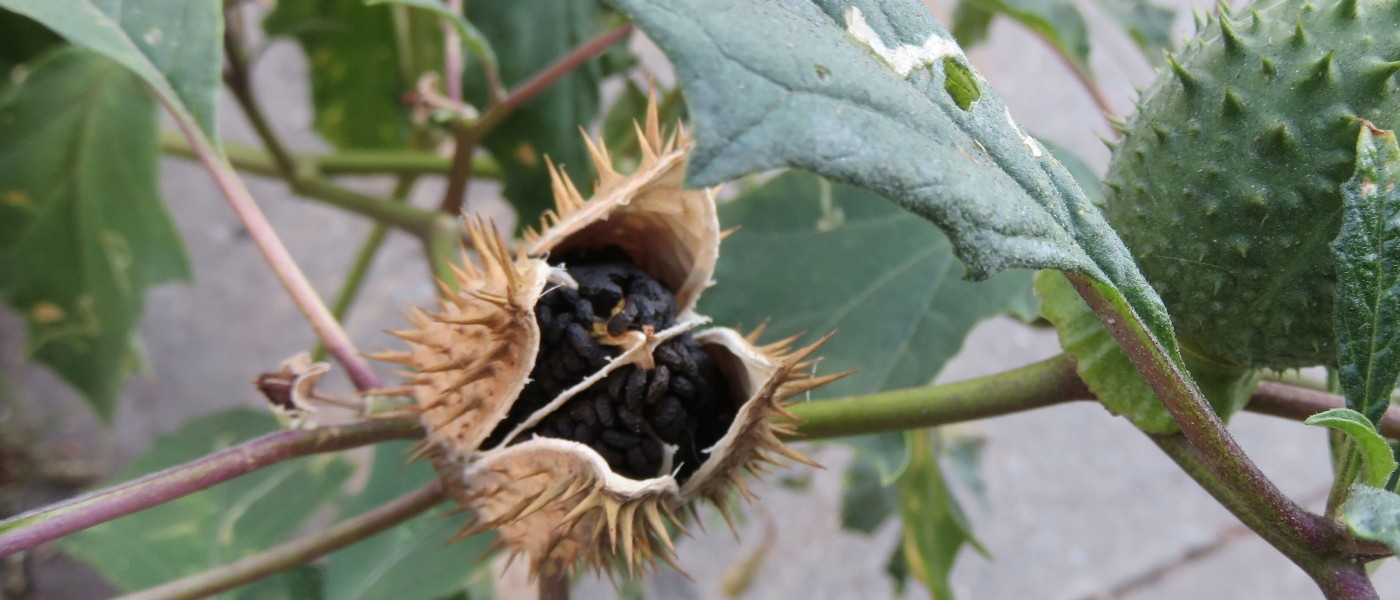Weed of the Month: Jimson Weed
Jimson weed (Datura stramonium) is a beautiful, witchy plant that begins blooming in late summer and continues through the first frost. A member of the notorious nightshade family, its more famous cousins include tomato, eggplant, pepper, tobacco, and potato. Most members of this plant family are poisonous, and jimson weed is no exception. All parts of the plant are toxic, most particularly the seeds. Potent amounts of alkaloid compounds are present, which potentially cause convulsions, hallucinations, and even death if ingested. And as climate change increases the amount of carbon dioxide in the air, studies have found that the toxicity of plants like jimson weed only increases.
The genus name Datura comes from the Hindi word for the plant, noteworthy since most botanical names are derived from Latin or Greek. The origins of the plant itself are contested—every source I checked listed a different native origin, ranging from Mexico to India, and it now grows all over the world. Not surprisingly, it has found its way into many cultural and medicinal traditions. Ayurveda, traditional Chinese medicine, and Native American practices all employ jimson weed medicinally or ritualistically. Its seeds and leaves are used as an antiasthmatic, antispasmodic, hypnotic, and narcotic.
Having grown up in Virginia, I was intrigued by one of the common names I saw recurring in my plant books—Jamestown weed—and researched the origins. One famous tale tells of the plant's accidental ingestion by some British soldiers sent there to suppress Bacon’s Rebellion in 1676. After eating some in a stew, the soldiers spent 11 days in a hallucinatory stupor, blowing feathers, kissing and pawing their companions, and making faces and grinning “like monkey[s].”
Jimson weed’s white to purple blooms are fragrant at night, attracting moths and other nocturnal pollinators, a common trait in white-bloomed plants. The rest of the plant, however, is stinky! Crush and sniff the oaklike leaves, and you’ll understand why domesticated and wild animals avoid eating this plant—it smells a bit like feet. Indeed, accidental poisonings tend be more common among humans than among other animals.
Though the trumpet-shaped flowers are stunning, my favorite part of the plant is the devilish-looking seedpod. The size of a Ping-Pong ball and covered in spikes, the seed capsule splits into four parts like a monster’s maw, revealing the dark brown seeds inside. In the winter you might notice its tall, dry stalks bearing the prickly seedpods, which to me look like the scepter for a demon. With all its extraordinary looks and lore, jimson weed is a fascinating plant to contemplate (but maybe not cultivate)!


